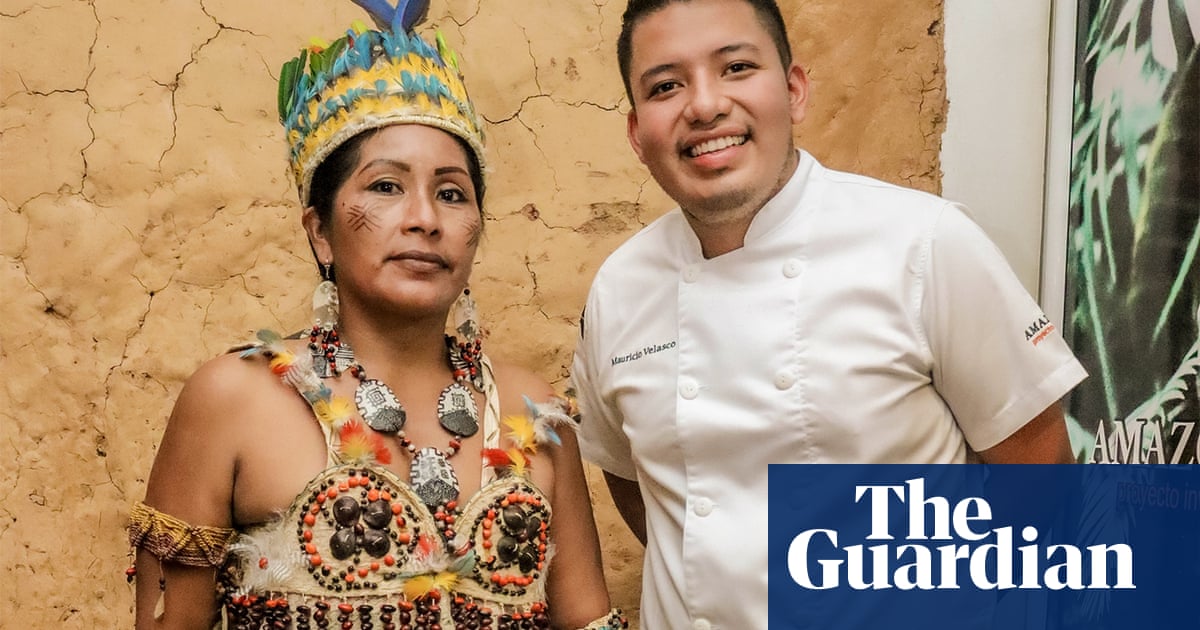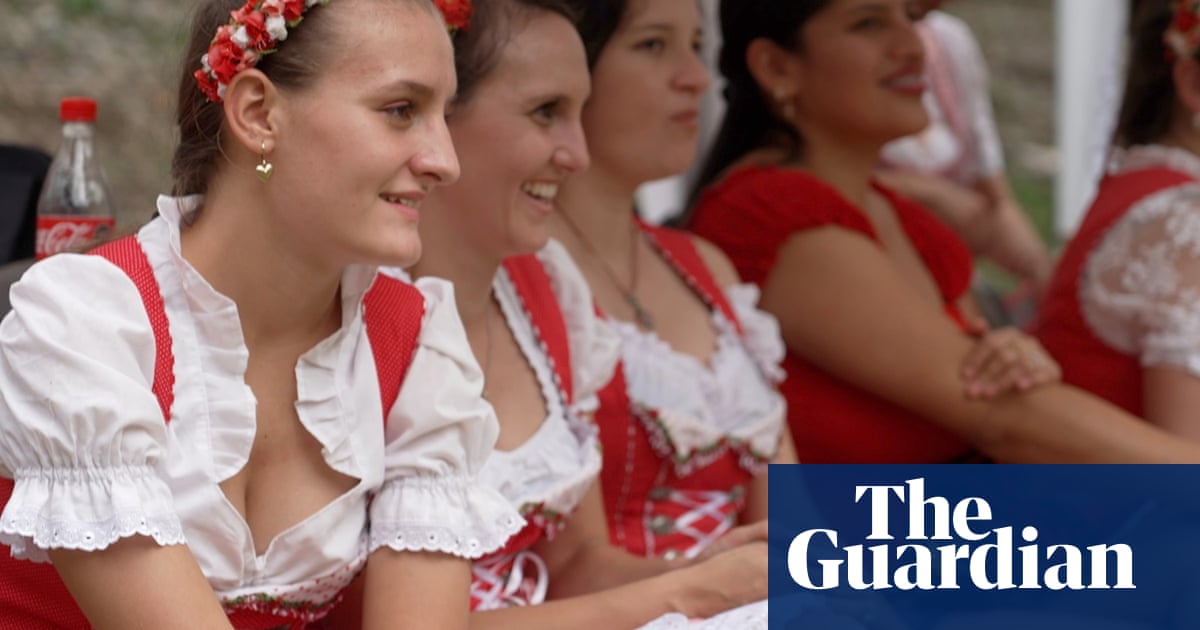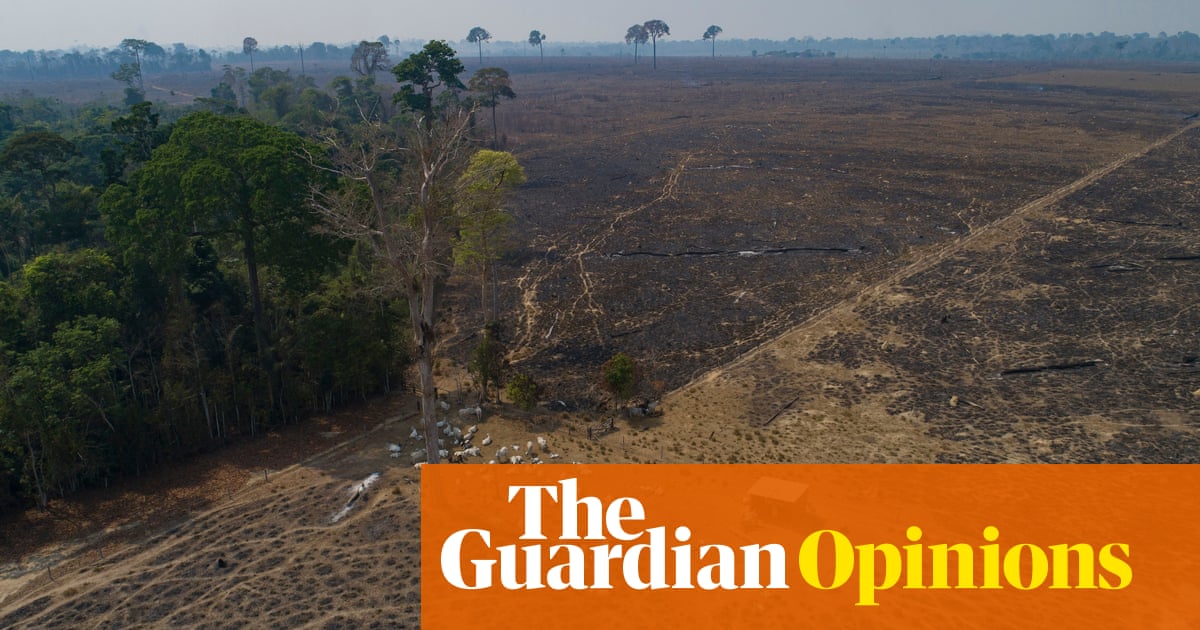
Many of the dishes that emerge from Mauricio Velasco’s kitchen are unrecognisable to most visitors.
Some, like the mojojoy – fat white palm weevil grubs served in a fish broth with lemon ants and sweet cassava flatbreads – can even repulse diners.
This means that Velasco spends a significant amount of his time away from the stove explaining to guests exactly what they are about to put into their mouths.
But that’s precisely the point, the 27-year-old says with a broad grin.
“I want people not to just fall in love through the stomach, but to understand.”
Velasco’s restaurant, Amazónico, is in Mocoa, the capital of Colombia’s Putumayo region. Surrounded on all sides by forested mountains, the town’s hilly streets remind visitors they are at an ecological frontier where the Andes mountain range ends and 7m sq km of Amazon rainforest begins.
Eighteen of Colombia’s 102 Indigenous groups live in the region – each with their own unique gastronomic traditions developed over thousands of years.
“All these different cultures are what makes Putumayo amazing. For a chef, it’s everything you could ever need to make wonderful food,” says Velasco, who grew up in the town.
Yet Mocoa has little gastronomic connection with the wider region: a hungry diner is far more likely to find a hotdog than fresh fish or Amazon fruits.
“People here do not really value what is theirs, so my idea was to make a space where people can come to taste and feel the different flavours, trying food that transports them to the communities they otherwise cannot reach,” Velasco says.
Velasco started Amazónico in 2019, and spent two years studying the diverse culinary cultures of the region’s Indigenous communities.
From the Siona people in the humid rainforests of the Amazon to the Kamëntsá communities in the Portachuelo mountains, the groups share a common threat: their heritage is fading.
Indigenous traditions – normally passed by mouth from generation to generation – are easily lost as communities leave Colombia’s forests for its cities.
Indigenous communities are particularly vulnerable in Putumayo, which has long been a conflict zone thanks to the drugs trade and the presence of armed groups. For decades Indigenous families have been forced to abandon their territory before their children can be taught to hunt or pick the fruits of the rainforest.
By documenting the traditions of Putumayo’s Indigenous peoples and bringing them to the town Velasco hopes to generate pride in Indigenous cuisine and help protect them from extinction.
“We want these people to continue passing the knowledge they learnt from their fathers to their children, not for them to feel ashamed and leave it behind,” he says.
Amazónico’s menu is created from seasonal ingredients purchased directly from Indigenous communities, and the reliable income stream helps them maintain their traditions, Velsasco says.
At the heart of the menu is the monstrous pirarucu – a prehistoric fish native to the Amazon and the largest in the world.
Different cuts of the pirarucu are grilled and served as steaks alongside various creamy and sweet sides but the most popular dish is probably the pirarucu croquettes. Fried in a crunchy cassava flour coating, balls of the 200kg fish are served with a black chilli sauce made with ants.
“Pirarucu used to only be available in Puerto Leguízamo, which is nine hours away and the only way to transport it was dried. It was overly salty and it stank, so everyone thought it was horrific. They didn’t realise that fresh pirarucu is delicious and you can use nearly the entire fish, from the tail to the belly and the ribs.”
Alongside exotic fish and insects the restaurant offers a wide selection of cocktails using the fruits of the Amazon.
Amazónico is the latest edition to the “rainforest to table movement” sweeping Latin America and the wider world.
By transporting the foods of the rainforest, ambitious chefs are educating people on the wonders of the Amazon through food.
The movement is helping raise awareness of the need to protect the rainforest from soaring deforestation, says Mark Plotkin, an ethnobotanist who has spent decades studying the healing properties of the Amazon’s roughly 80,000 plant species.
“New restaurants like this are blazing a new culinary trail into the rainforest, sharing these tasty and nutritional delights with the world at large,” Plotkin says.
Bistro-style restaurants serving foods from far-flung corners of Colombia have become in vogue in the past 10 years in Bogotá and are at the forefront of the capital’s innovative food scene.
Away from Bogotá’s hipster bubbles, the task is more challenging.
Local people are reluctant to dine at one of Mocoa’s most expensive restaurants when they recognise little on the menu. Most customers at Amazónico are visitors to Putumayo from Bogotá or abroad.
“I’m often asked, ‘where is the salmon, the steak or the risotto?’” Velasco says.
Offering a few familiar options on the menu and carefully explaining Amazónico’s concept to new guests is helping secure more local reservations, however. Earlier this year the restaurant inaugurated a second floor to accommodate the growing number of customers.
The restaurant is already making a change to the communities that Amazónico works with, Velasco says. Seeing their traditional foods served up under Amazónico’s wicker lamps fills them with pride over their rich gastronomic heritage.
The biggest change, however, has probably been visited on the chef himself.
Velasco had planned to learn his trade in the Michelin-starred kitchens of Europe, but Amazónico was conceived out of necessity when a landslide flattened Mocoa in 2017, destroying his parents’ bakery – and with it hopes of studying abroad.
“Amazónico has changed my life entirely,” he says. “I now realise that I wanted to travel before ever really understanding or valuing my own home. In exploring my region and meeting all these people, every day I understand, fall in love with, and appreciate Putumayo more. My dream today is not to travel but to keep working with them because I can see the change it’s bringing.”












